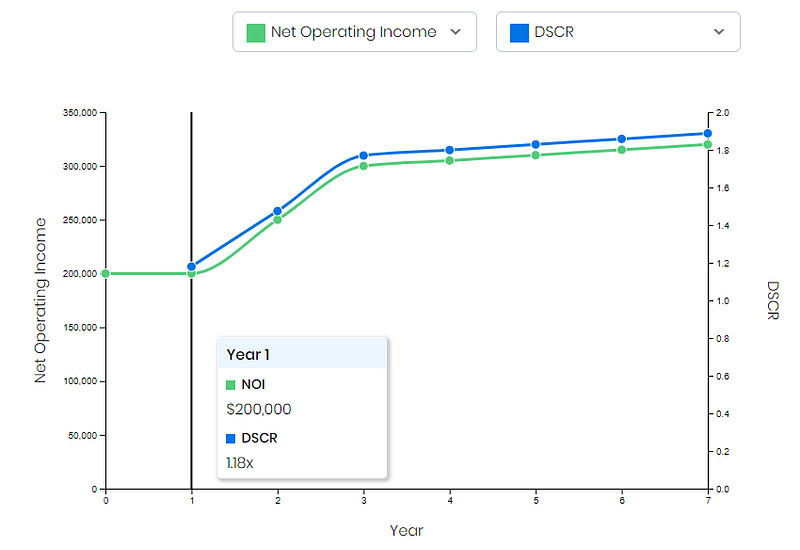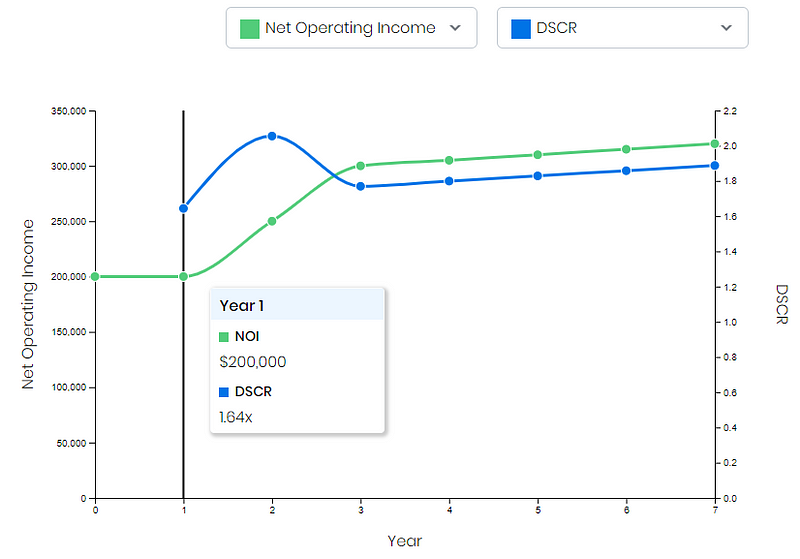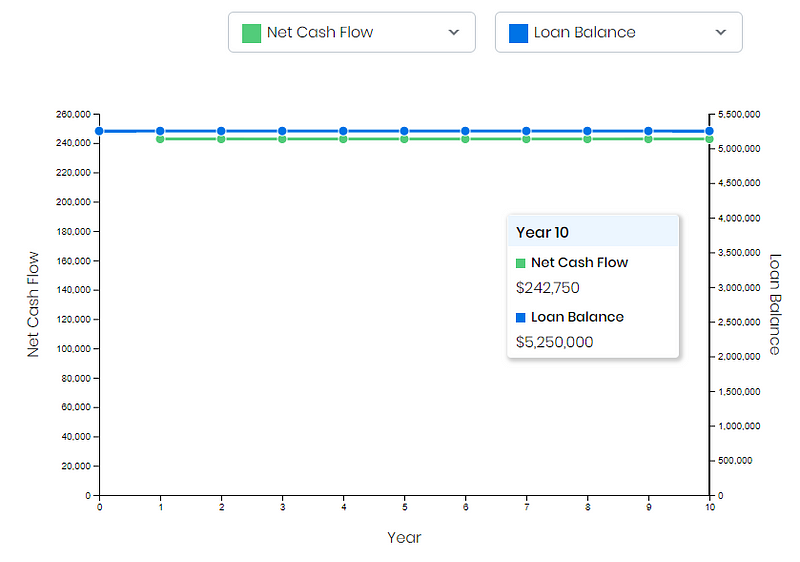

Interest-only commercial mortgages: how they work, & where to get one

Cash, flow.
That’s the point of taking on an interest-only (“I/O”) commercial mortgage. Before diving in here, make sure you understand the basics of how an amortization schedule works. If you don’t, read this post first.
So, cash flow.
An interest-only loan is simply a loan that collects interest-only payments, rather than amortizing (paying down the principal). Interest-only payments may be applied to a specific period of a loan, usually at the beginning, or may apply for the entire life of the loan. Many bridge lenders and debt funds typically only require interest to be paid on the loan until maturity, when they will collect on the entire loan principal. This is referred to as “full-term interest only”.
Interest-only periods can be helpful in these three situations:
- [Maximize current cash flow] Increase an investor’s Cash on Cash Return over the life of the loan term or period.
- [Increase future cash flow] Lower the hurdle on a loan’s required Debt Service Coverage Ratio for a period of lower Net Operating Income, leaving more budget to make capital improvements to the property that would increase the net operating income, and also potentially increasing loan size.
- [Create future cash flow] Keep the payments to a minimum for a construction or major rehab loan, before income is possible.
The math
Example 1: Multifamily value-add
Property Listing: Multifamily | NOI = $200k | Listing Price = $3 Million
Strategy: Value Add — you believe you can achieve $300k NOI by year three by investing $250k into property improvements.
For this scenario, we’re aiming for maximum leverage at a low fixed rate. Let’s assume a lender can offer 80% LTV on 25 year amortization.
7 year term, 25 year amortization

The problem for this fully-amortizing loan is that the DSCR starts out at 1.18x, which may be below the lender’s minimum requirement. Here is the same view with an initial I/O period, all else equal:
7 year term, 2 years I/O followed by 25 year amortization

With the I/O period, we get a healthy bump in the DSCR for years 1 and 2, because we’re not expected to pay down the loan’s principal yet. Also, I’m modeling the same NOI growth for both loan structures, but it may be that the extra cash flow goes back into the property to make capital improvements faster, and increase the NOI more quickly, potentially boosting IRR.
Example 2: Stabilized Retail
Property Listing: Retail | NOI = $500k | Listing Price = $7 Million
Strategy: Max cash flow — you’re retiring, and want to maximize cash flow for the next 10 years to live comfortably. The property is in great shape, in a great location, and has great anchor tenants with NNN leases. For simplicity, we’ll assume NOI will remain constant at $500,000 per year.
10 year term, 25 year amortization

Note that “Net Cash Flow” here means after debt service. Not bad — $135k per year in free cash flow.
10 year term, Full-term I/O

With the full-term I/O, we’re making the trade-off of a higher “balloon payment” in year 10, but achieving a much higher free cash flow of over $242k per year for a relaxing retirement lifestyle. In this scenario, that was more important than other considerations, and we’re achieved it with the I/O period.
Where to get a loan with interest-only payments
Debt Funds
Debt funds are lending groups backed by LPs that have invested their money exclusively to back real estate loans. The cost of capital is more expensive than banks, CMBS, or Life Co. These investors want healthy profits, so the money is often deployed for construction, value-add, or distressed projects where the interest-only feature is helpful to produce a higher NOI.
CMBS
CMBS is typically the cheapest source of senior debt capital that will still be able to offer full-term interest-only payments, with loan terms up to 10 years. The trade-off is that the "); background-size: 1px 1px; background-position: 0px calc(1em + 1px);">DSCR requirement will typically be higher if the investor takes that full-term I/O loan. If the goal is to maximize 5 or 10 year cash flow, and the investor has enough equity to buy the asset at the given leverage, CMBS can be a great fit.
More flexible banks and credit unions
Many banks and credit unions will simply underwrite a deal exclusively to current cash flow, so they’re not a fit for loans structured to add future value. Those banks are content to sit back and lend against only stabilized assets, and typically win loan deals based on their pricing. For that reason, there’s more of a correlation with interest-only lending among the banks and credit unions that can’t win stabilized deals based on price — they’re a bit more expensive than the largest banks, but their flexibility can win out in these scenarios.
Fannie Mae and Freddie Mac
For multifamily properties that are already high occupancy and cash flowing, Fannie and Freddie can typically still offer a front-end interest-only period for an acquirer. This can help allow more room in the investor’s budget for renovations that will push the rents higher before the standard 30-year amortization kicks in.




Comments